Northern Ireland's tiny house movement - a small move to the future?
- Published
'Maybe it is strange to build a random tiny house'
Downsizing. De-cluttering. Alternative housing - these terms are becoming increasing well-known as people try to find and improve their perfect living space.
But how would you feel about living in a 'tiny house' on wheels?
That's what Michael Rauch, 25, and his girlfriend Alex Connolly are building on the back of a flatbed trailer in County Down.
When finished, he'll become one of a very small handful of 'tiny house' owners in Northern Ireland and part of the global tiny house movement, which has its roots in the United States in the 1990s.
Tiny houses differ from mobile homes and caravans in that they have a similar aesthetic to a larger house, and use traditional building materials.
"Maybe I'm just a bit weird, I don't really know how other people think," said Mr Rauch, an engineering graduate.
"I guess it's a riskier route. It is a lot easier to just rent somewhere or get a mortgage on a place."
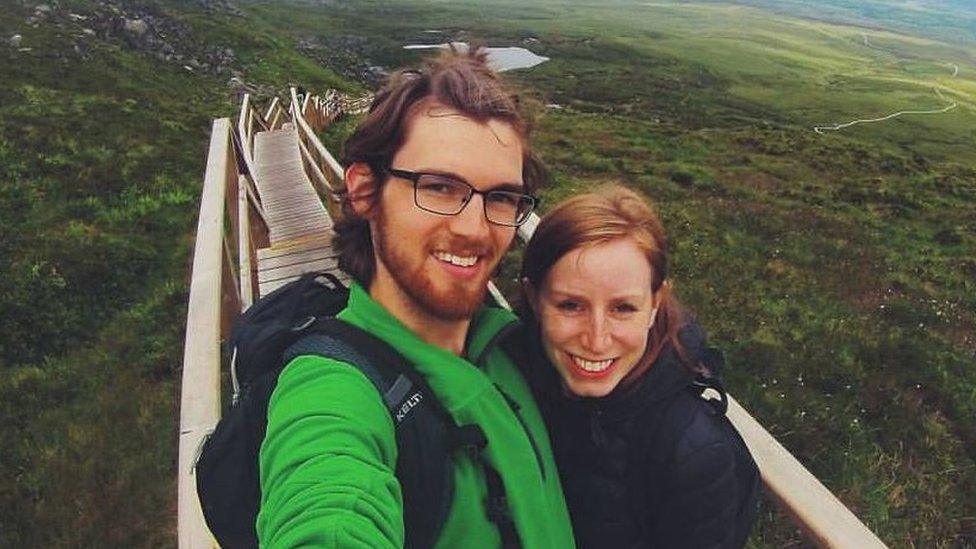
Mr Rauch got the idea for his tiny house after living in a van for a year
Initially, his motivation was financial - he wanted to avoid tying them down to a mortgage, a "big commitment, money-wise" which doesn't "suit us at this time in our lives".
The idea came after Mr Rauch returned from a year living in a van in New Zealand with Ms Connolly.
Rules and regulations
The house is being built on the back of a flatbed trailer, its frame constructed with plywood and panelling.
He hopes it will be finished by the end of the year, with the couple able to go completely off-grid by using solar panelling, battery storage and collected rain water to maintain supplies of electricity and water.
However, the tiny house movement's proliferation across the world has not been without criticism.
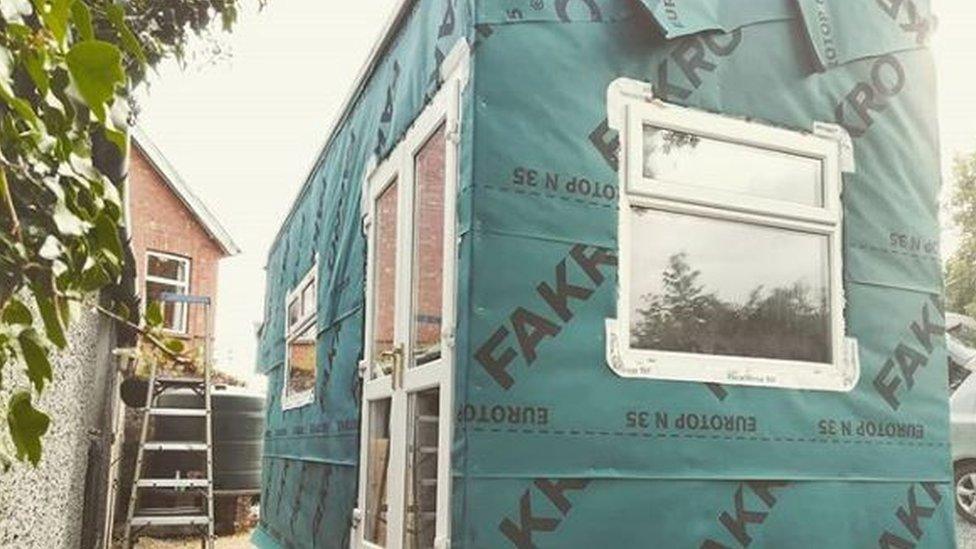
Having recently added an exterior waterproof membrane, Michael is now working on its interior
Their viability as a stepping stone to property ownership is unclear, due to an unproven resell market, and there are questions about just how sustainable they actually are.
The legality of building and living in a tiny house in Northern Ireland also remains cloudy.
Certain structures - such as walls and fences under a certain height - are classified under planning as "permitted developments", and don't require special permission.
In a statement, a Department for Infrastructure spokeswoman said "the planning process (for a tiny house) would need to be looked at on a case-by-case basis".
The spokeswoman added that anyone considering a project should consult with their council.
Aware of the risks, Mr Rauch said that if "worst comes to worst, it will probably just mean I will have to tow it somewhere else".
"It would be different if I was building it on the ground. I would probably think more about that."
Living in a horsebox
Steve Golemboski-Byrne spent a year and a half living in a tiny house, which he converted from an old horse box.
Originally from England, but living in Northern Ireland for 20 years, he made the decision while looking for a place to buy property.
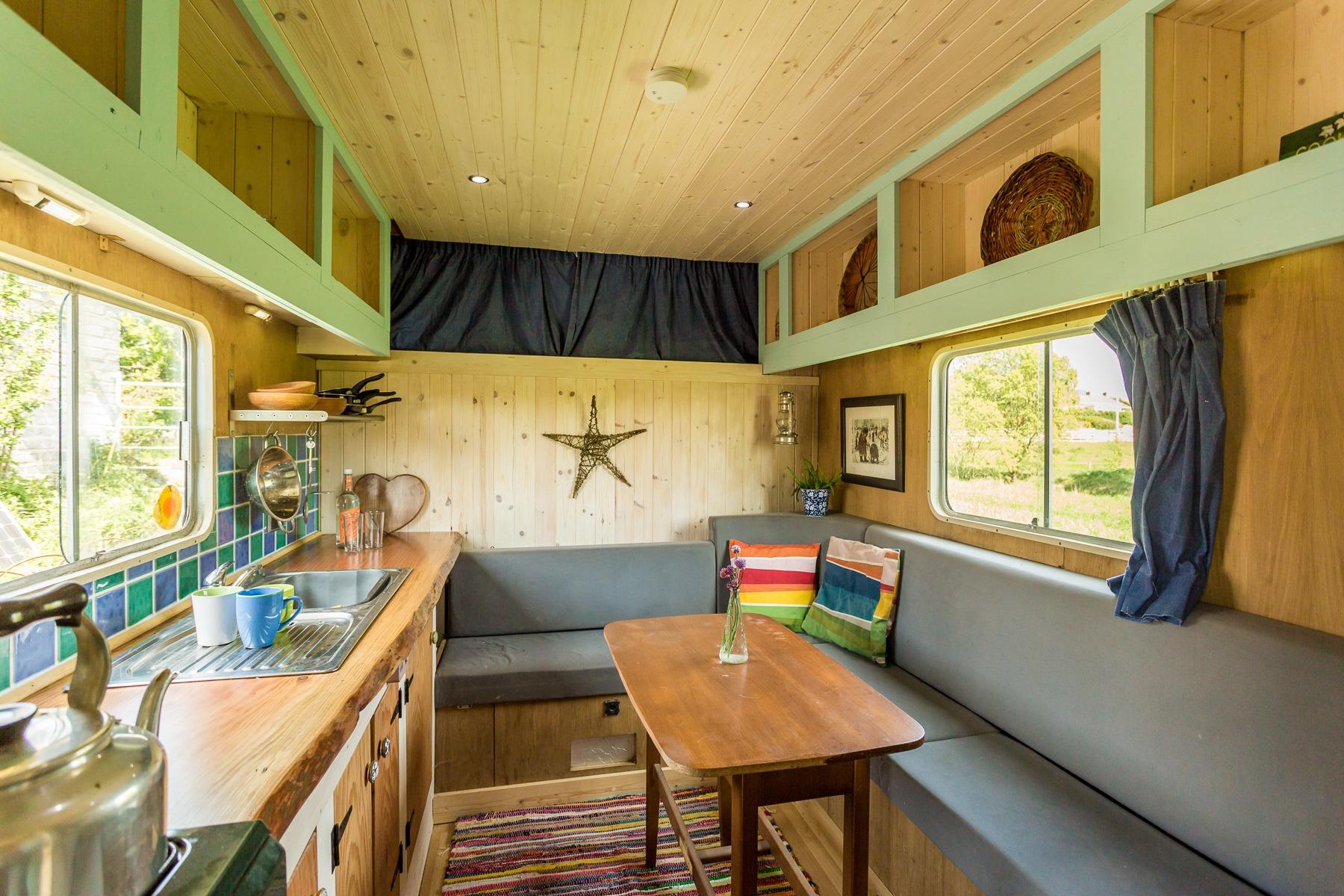
Steve lived in his converted horse box for a year and a half after it was converted
His wife, Claire, suggested the conversion and they carried it out on a community farm project in Bangor with the owner's permission.
The move gave Mr Golemboski-Byrne freedom from rental costs at a time he was making a career change.
Now, he runs Lacken Cottage Farm in County Down, where he teaches courses on sustainability and off-grid living, and visitors can stay in his former horsebox digs.
Having it parked on a farm allowed Mr Golemboski-Byrne to "work away quietly on it", but he reckons planning could pose issues for anyone wanting to make a similar move.
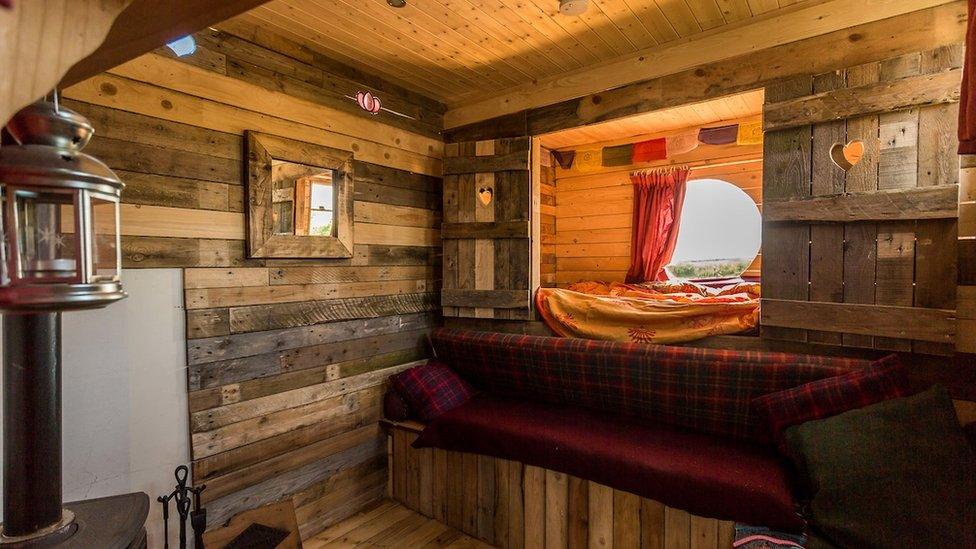
Living in the converted horse box allowed Steve to test out off-grid living
"I think people think because tiny houses mostly have wheels, you get around planning," he said. "But if you park it and live in it, they will want you to get permission for it."
He said alternative accommodation may appeal to a new generation because of rising house prices or a wish to live more sustainably.
"Or they just realise the only way to get on the housing ladder is to do this themselves," he added.
Changing landscape
In the past couple of months, a series of meetings have taken place around Belfast, drawing people interested in developing a tiny house community in the east of the city.
"I was imagining they would all be like me and be single 25-year-olds," said Anna Lecky, who is organising the sessions, which are backed by social enterprise the Eastside Partnership.
"But it's not. It's people in their 30s who are just getting married. Or there are people in their 50s who are looking to downsize."
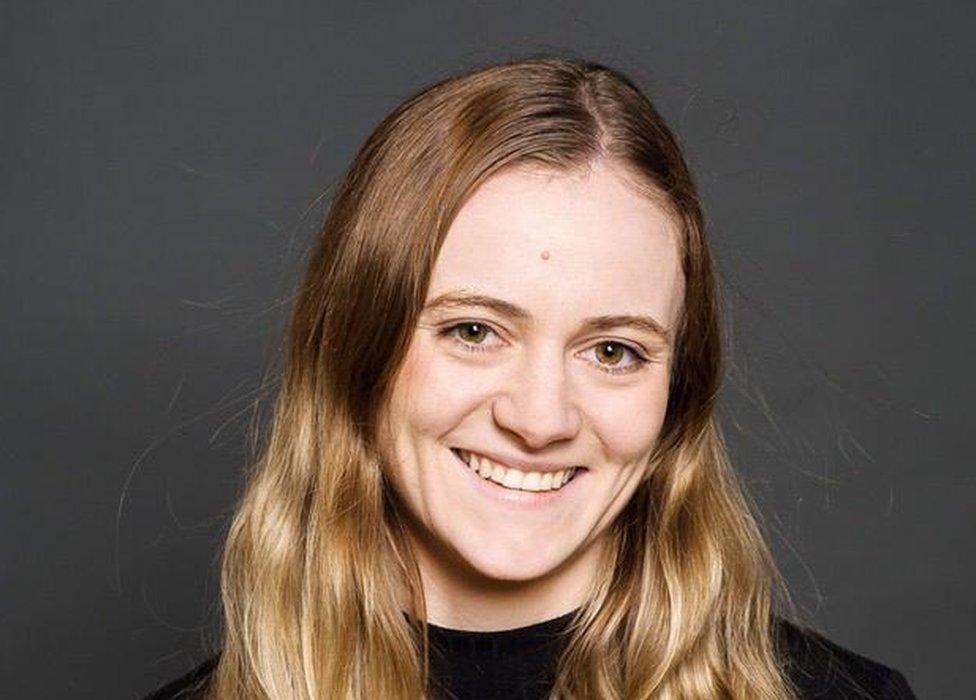
Meetings held in Belfast have drawn a diverse mix of people, says Anna Lecky
Ms Lecky's plan, which she said is "still in the ideas stage", involves situating 10 to 12 houses on vacant land in the east of the city, which would include short-term rental and social housing units.
She hopes the project can form part of Belfast City Council's plan to construct 31,600 housing units between 2020 and 2035.
When asked about the potential arrangement, a council spokeswoman said it needed to take a "balanced view of housing development, recognising the need to maximise the use of land and space within a compact city".
Ms Lecky said she feels the city is at a point where "it could change" and tiny houses could offer an innovative alternative.
"It is just about trying to encourage people and the authorities, and not scare them about the process being different."
- Published20 July 2019
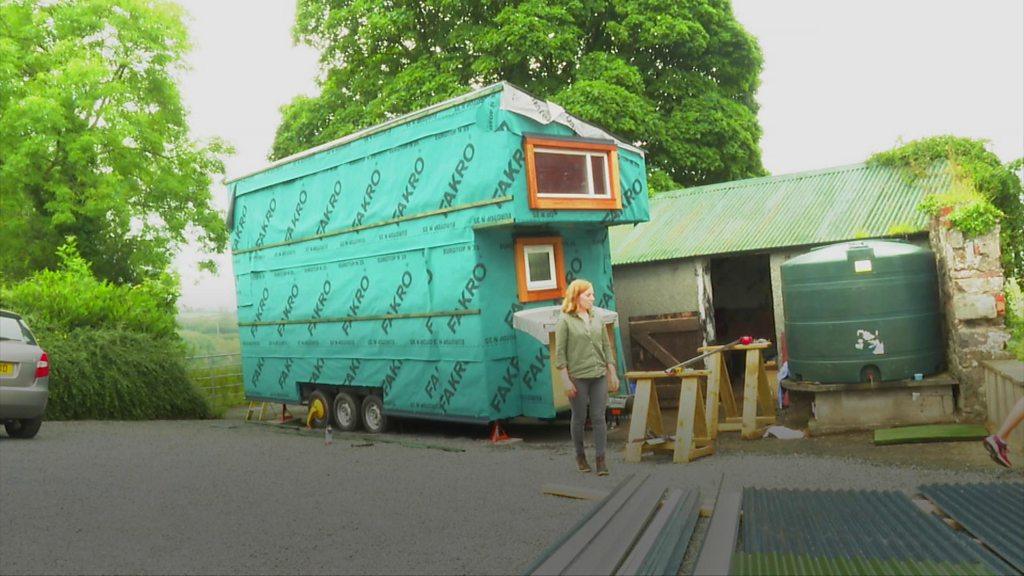
- Published19 September 2014
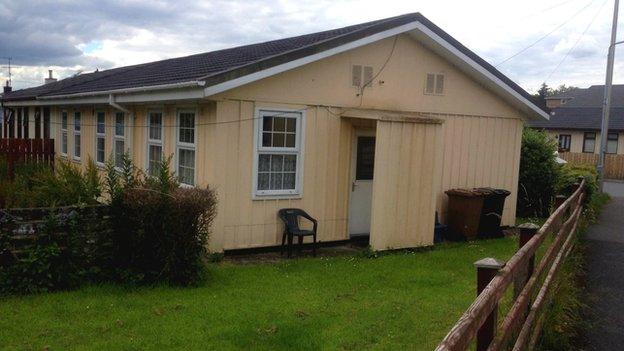
- Published21 February 2019
